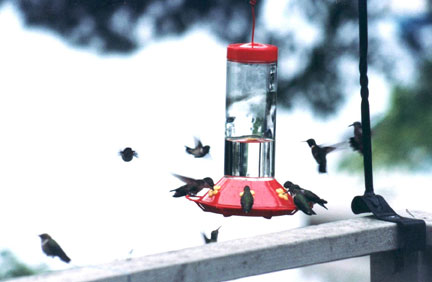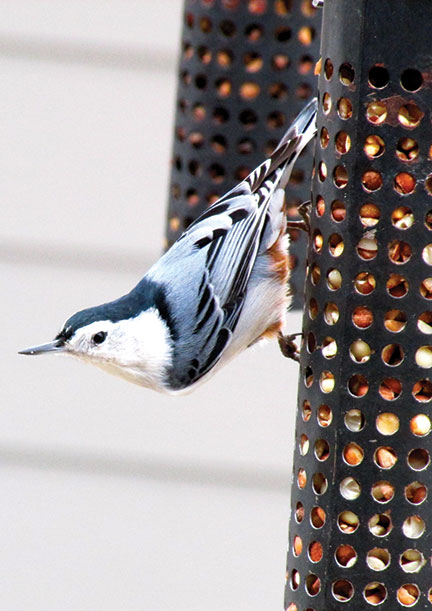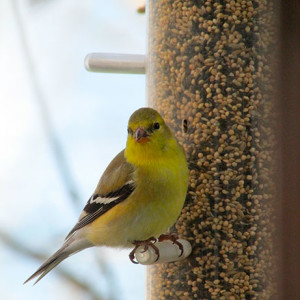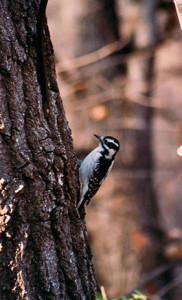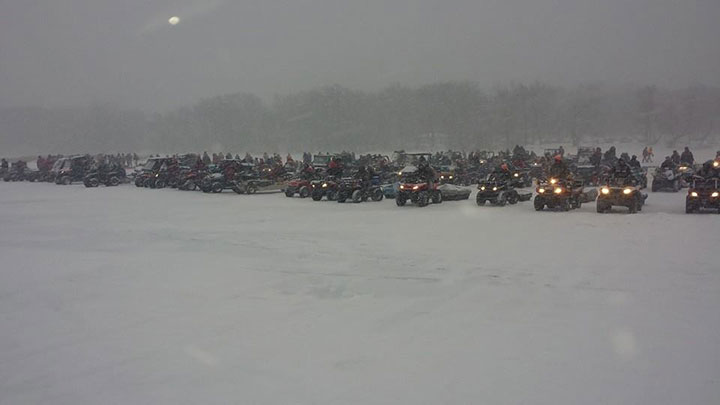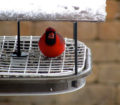Darial Weisman
Fall is a time of anticipation and a desire to get our outdoor “things” done before winter decides to arrive. Fall is also a great time to attract a wide range of songbirds, both migrating and those that stick around. Bird feeding and bird watching continues to gain popularity. According to an outdoor recreation survey conducted by the U. S. Fish and Wildlife Service, Americans spend about $300 million each year to view wildlife. Most of that comes with bird feeding and bird watching!
With just a few feeders, you can draw some of the most beautiful songbirds into view, often right off your deck or your best “bird watching windows.” My husband and I spend much of our relaxing time watching the antics of our songbird visitors. When our grandchildren come for a visit (ages 14, 11 and 3), they will actually slow down and watch with us.
Although you can stock your backyard with a wide range of feeders, these are just a few that we find will most certainly bring us good songbird watching.
One of the birds we love to attract is the American goldfinch. They are attracted to thistle feeders. Although they do go through a molt and seem to disappear, they will be back. Their brilliant yellow and shiny black colors make the male a striking visitor! We will hang feeders with nyger seed (thistle) and a mix called Finch Delight up throughout the entire year for the finches. They also like sunflowers, which provide good fat and sugar content to help the goldfinch through the upcoming winter months.
If you want to watch real “songbird antics,” get yourself a peanut feeder. It is a round cylinder shaped feeder with holes all around, so that peanut-loving birds can “hammer” away at this delicacy. This feeder is perfect for birds in the woodpecker family. We have red-breasted nuthatches, downy woodpeckers and even some red-bellied wood peckers come to this feeder. The nuthatches seem to spend most of their time upside down pecking away at the peanut morsels. Of course, a couple of suet feeders are also ideal for these birds.
Black-capped chickadees are beautiful little birds that constantly flit in and out of our feeder station. We have a series of shallow open brass dishes that fit into round bases on a hanging wrought iron hanger. We fill these with safflower, and the chickadees are in and out…in and out taking a seed up to a tree and then back down for another and another and another. They just never seem to get tired.
Then there are the dark-eyed juncos. They are the cleaner-uppers and spend most of their time hopping around under the feeders cleaning up the fallen seed.
The most vibrant and to me the most difficult to attract is the cardinal. Their song is so clear and the male is so beautiful. They like open platform feeders and really prefer a mix we buy called cardinal mix, which is a blend of sunflower, safflower, pieces of peanuts and grain products. The neat thing about this type of mix is that it will attract many of the other birds, too.
Finally, we work very hard to attract the tiny jewel of the songbird world: the hummingbird. They are with us from the time they come back in the spring until they begin their fall migration. That often times begins in August, and certainly in September, but as our summer hummers leave, they are replaced by scores of migrating hummers from the north.
What a show they will put on as they migrate south and descend on our hummingbird feeders for a fuel up. They are so inquisitive and will actually hover right in front of us (checking us out) when we happen to be sitting on our deck during one of the warm fall days.
As I mentioned in an earlier column, hummingbird nectar is easy to make. It’s a homemade recipe, and I definitely believe that hummingbirds prefer it to the store bought mixes. Here is the recipe:
- 1 part sugar
- 4 parts water
- Boil the sugar water until the sugar dissolves and the water is clear (usually takes 1-2 minutes).
- Cool and store in the refrigerator if you are going to use it that week (if the mixture becomes cloudy, do not feed it).
- Freeze it in containers for later use – this is a great way to always have sugar water (nectar) on hand. When you are ready for more nectar, simply remove the container from the freezer, allow the mixture to thaw out and then pour it into the feeder.
As you develop your bird feeding stations, we have found you have to make one huge decision. Do you want to squirrels messing in your bird feeders or not. Some people enjoy squirrels; others don’t! We try to deter them, so we use squirrel proof feeders or poles that swing out beyond our deck that the squirrels cannot climb on. Either way, it’s your choice.
As with all seasons of the year, make sure to keep your feeders clean and well-stocked. There is nothing worse than attracting your songbirds and then forgetting about them for several days and running out of food.
One last thing. Make sure to have some water available for the birds, whether it is a bird bath, waterer or fountain. Happy Birding!
(photos by Darial Weisman)

